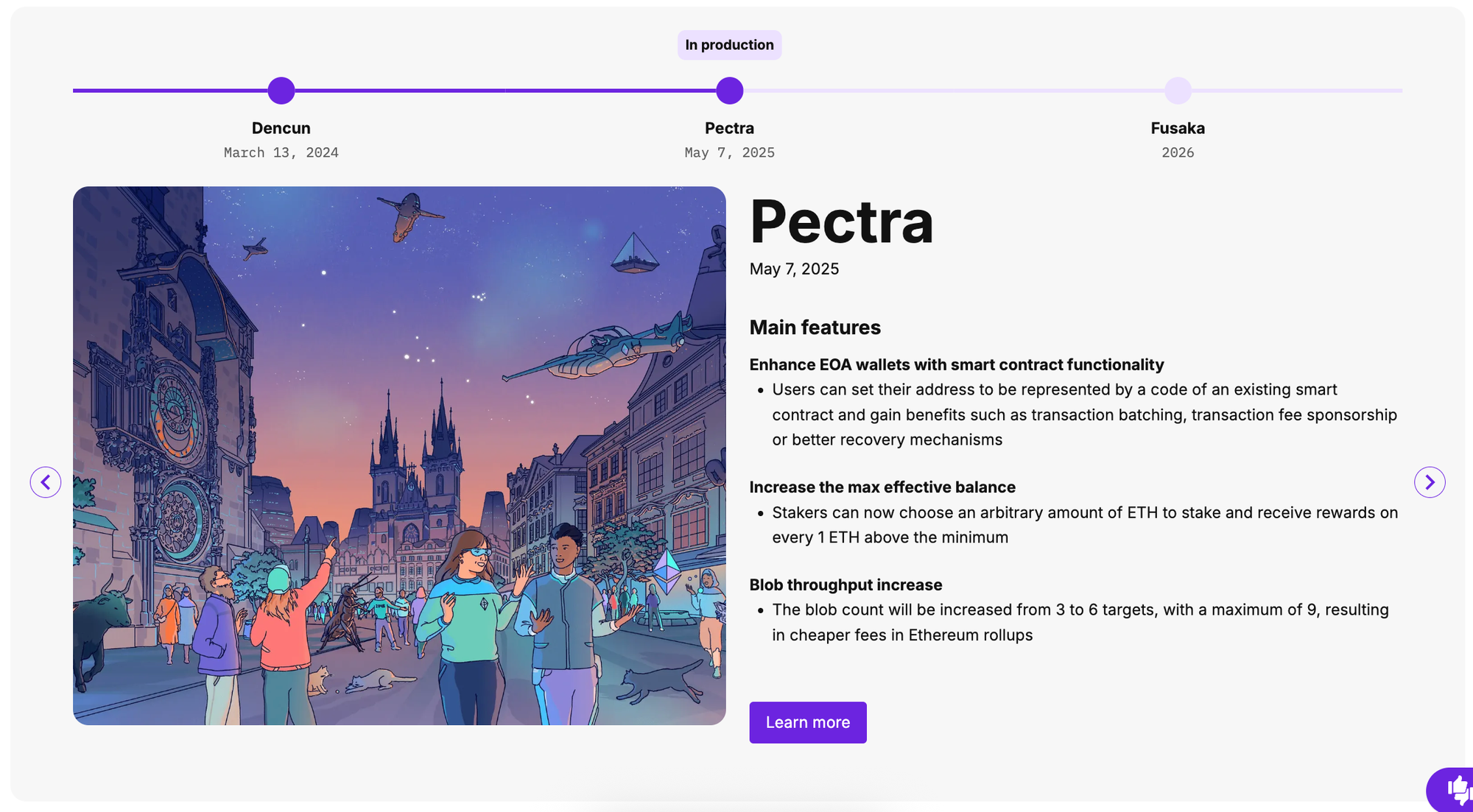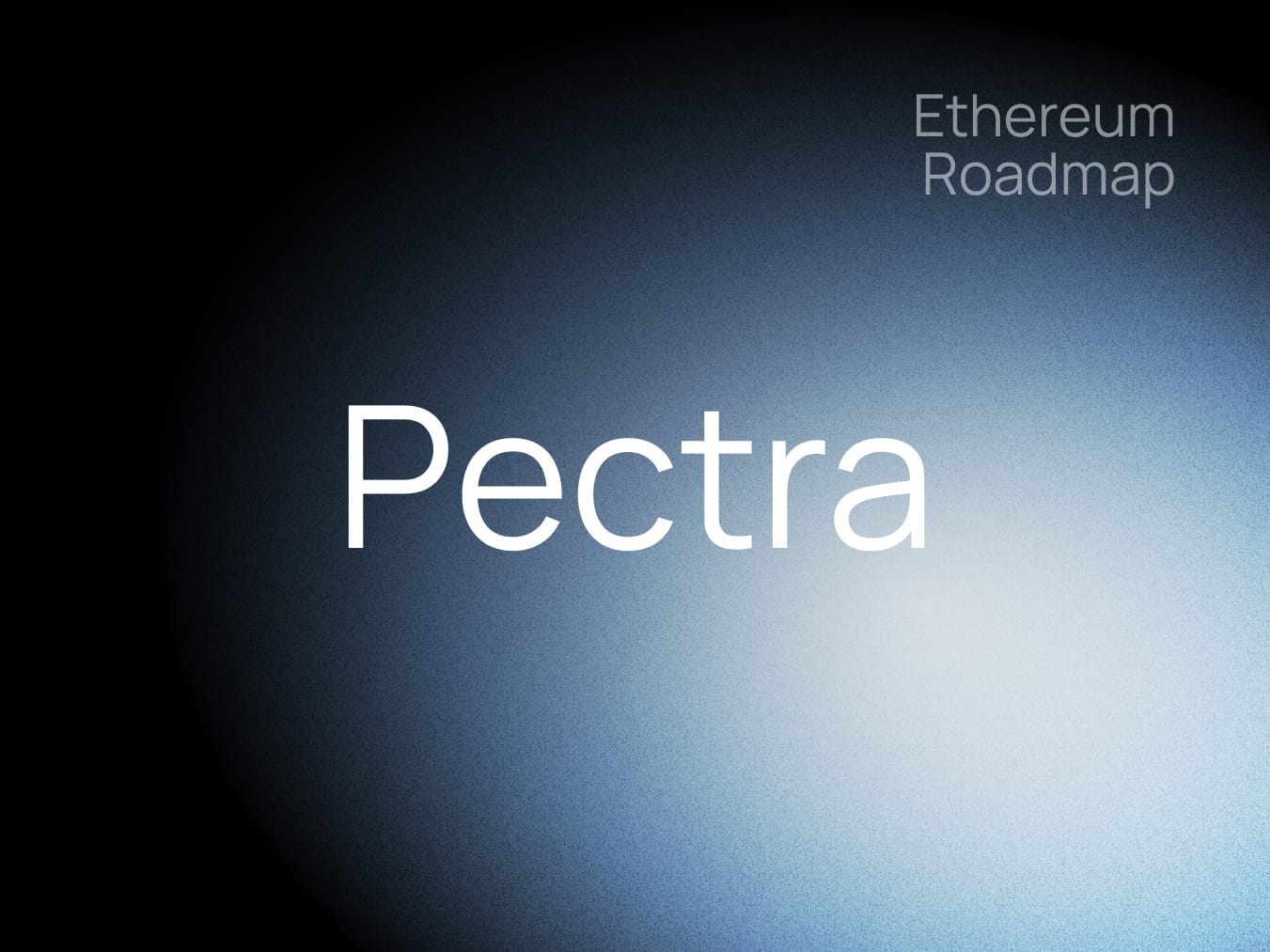Pectra is a major upcoming upgrade for Ethereum, combining the forces of "Prague" (Execution Layer upgrade) and "Electra" (Consensus Layer upgrade). It's designed to enhance the Ethereum network's efficiency and introduce new functionalities. We've summarized what's important and how it affects different groups

For ETH Holders (What You Need to Know!)
Simply put, Pectra will help make Ethereum better, more secure, and more future-proof, all without you needing to do anything with your ETH!
- Your ETH is Safe! You do not need to take any action with the ETH you currently hold. Your balance will remain the same, and your ETH will function as usual after the upgrade.
- Beware of Scams! If anyone tells you to "upgrade" or "convert" your ETH because of Pectra, it's a scam! Ethereum upgrades happen automatically on the network.
- Smarter Wallets on the Horizon: A key upgrade (EIP-7702) paves the way for "Account Abstraction." In the future, this could allow your Ethereum wallet to do more, such as:
- Bundling multiple transactions into one.
- Enabling "gasless transactions" (where someone else might pay the gas fee).
- Offering more versatile wallet recovery methods.
- dApps and Layer 2s Could Improve: Enhancements to "Blobs" (EIP-7691) will increase capacity for Layer 2 solutions, making them cheaper and more efficient. This could lead to a better dApp experience for you in the long run.
- Increased Network Security and Stability: Various improvements will contribute to the overall security and operational efficiency of the Ethereum network.
The Bottom Line: ETH holders do not need to do anything for this upgrade. Your assets will not be affected. Just stay informed through reliable sources!
For Node Operators and Validators
The Pectra upgrade brings several significant technical changes crucial for your operations:
- Staking Changes (EIP-7251):
- Increased Max Effective Balance: The maximum effective balance for a validator will increase from 32 ETH to 2048 ETH. This allows a single validator to stake more ETH and earn rewards proportionally.
- Validator Aggregation: Those running multiple 32 ETH validators may be able to consolidate them into a single one, simplifying management and reducing network load.
- EOA Account Abstraction (EIP-7702):
- This major change allows Externally Owned Accounts (standard user accounts) to be extended with smart contract functionality. A new transaction type will enable address owners to authorize their address to mimic a chosen smart contract.
- Increased Blob Throughput (EIP-7691):
- The target average number of blobs per block will increase from 3 to 6, with a maximum of 9, boosting capacity for Layer 2 Rollups.
- Calldata Repricing (EIP-7623):
- Slightly increases the cost of calldata for data-heavy transactions. This incentivizes L2s to use blobs and bounds the worst-case block size (over 99% of typical transactions will be unaffected).
- Execution Layer Triggerable Exits (EIP-7002):
- Enables validator exits to be triggered from the execution layer using withdrawal credentials. This means the active validator signing key or direct Beacon Chain access isn't required, which is helpful if keys are managed by different entities or if a validator key is lost. It also enhances trust assumptions for staking protocols.
- On-chain Validator Deposits (EIP-6110):
- A new method for processing deposits from the execution to the consensus layer, allowing for instant processing with less implementation complexity. It's a more secure, native way of handling deposits in the merged Ethereum.
- Precompile for BLS12-381 (EIP-2537):
- Adds new precompiles for cryptographic operations over the BLS12-381 curve (already used by the consensus layer). This allows smart contract developers to perform these operations (e.g., signature verification) more efficiently and securely. Beneficial for staking pools, restaking, light clients, bridges, and zero-knowledge applications.
- Serve Historical Block Hashes from State (EIP-2935):
- Creates a new system contract that can serve the last 8192 block hashes (up from the
BLOCKHASHopcode's limit of 256). This aids future-proofing for stateless execution and is more efficient with Verkle Tries.
- Creates a new system contract that can serve the last 8192 block hashes (up from the
- Move Committee Index Outside Attestation (EIP-7549):
- Moves the committee index outside the signed part of the attestation message, making it easier and more efficient to verify and aggregate consensus votes.
- Add Blob Schedule to EL Config Files (EIP-7840):
- Adds new fields to execution layer client configuration for dynamically setting target/maximum blob counts and blob fee adjustments, reducing complexity in exchanging this info via the Engine API.
The Pectra upgrade involves many technical details. Node operators and validators should consult official Ethereum resources and their client development teams for comprehensive information to ensure a smooth transition.
*Cryptocurrency is highly risky; investors may lose all investment money.
.
.
.
.
.
Source
